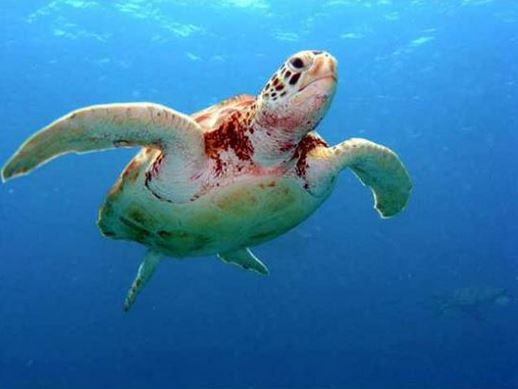Ben Read was walking down the beach in Devon, England, when he came across a super rare and endangered turtle – a Kemp’s ridley sea turtle – which was mysteriously thousands of miles from the Gulf of Mexico, its normal habitat.
Mr. Read found the turtle about 10 miles from his house on Green Cliff beach, near Abbotsham.
According to biologists, there are only about 1,000 nesting female Kemp’s ridley sea turtles left on Earth. It is one of the rarest turtles in existence.
On discovering the animal, Mr. Read called a friend who is studying marine biology, and then learned about it.

Kemp’s ridley sea turtle (Lepidochelys kempii) is the rarest sea turtle on Earth. It generally prefers the warm waters of the Gulf of Mexico, but may inhabit waters as far north as New Jersey. Reaching UK beaches is a mystery.
Mr. Read picked up the dead animal and took it to his house and placed in his freezer, thinking that preserving whatever was left might be useful for biologists later on.
According to Mr. Read “The marine biologist knew straight away, as soon as I described the markings, that it could be a Kemp’s ridley. He said that the turtles originate from Mexico, but are extremely rare and are now critically endangered.”
Such a long way from home
How can such a turtle, whose habitat is thousands of miles away in the Gulf of Mexico, end up on a British beach?
This is not the first case. Another two Kemp’s ridley sea turtles were found in December washed up on beaches in the north of England. They were alive when found, but have both since died. One was discovered near Formby, Merseyside, and the other on Cumbria’s Walney Island.
The animal found in Merseyside died soon after being discovered, while the other was looked after at the Lake District Coast Aquarium at Mayport. Biologists said it refused to eat and eventually died.
The endangered Kemp’s ridley sea turtle
Kemp’s ridley sea turtle (Lepidochelys kempii), known also as the Atlantic ridley sea turtle, is the world’s rarest sea turtle and is critically endangered.
Their numbers initially dropped dramatically due to hunting. However, today, their major threats are pollution, loss of habitat, and entanglement in shrimping nets.
Several protection organizations today encourage fishermen to use a turtle excluder device, which helps the animals escape from the net.
The Mexican government declared the turtle a protected species in the 1960s. In the US, it was first listed under the Endangered Species Conservation Act in 1970.
On a positive note, zoologists have reported a growing number of sea turtle nest sightings along the beaches of Texas.
